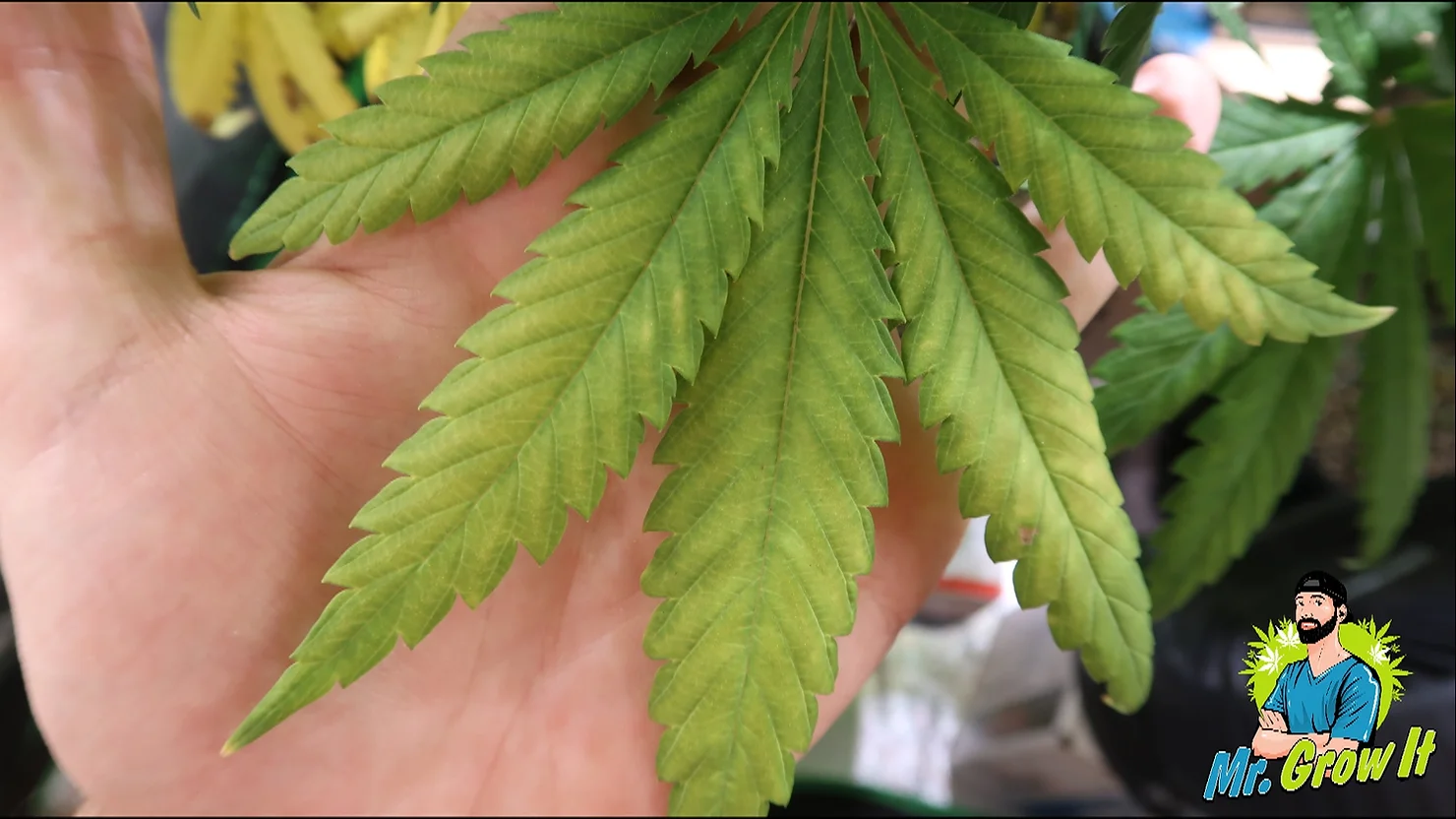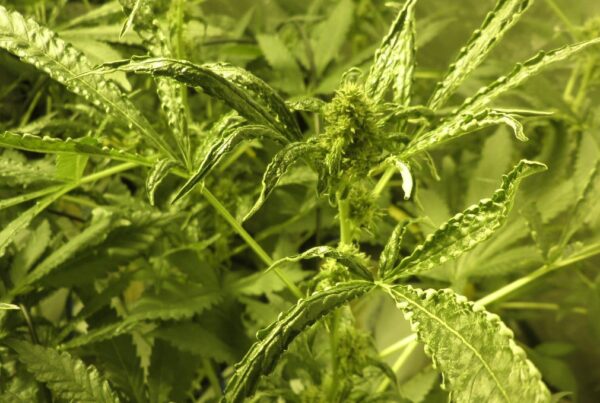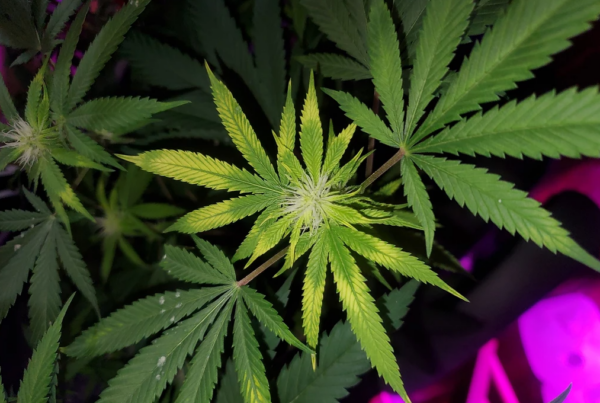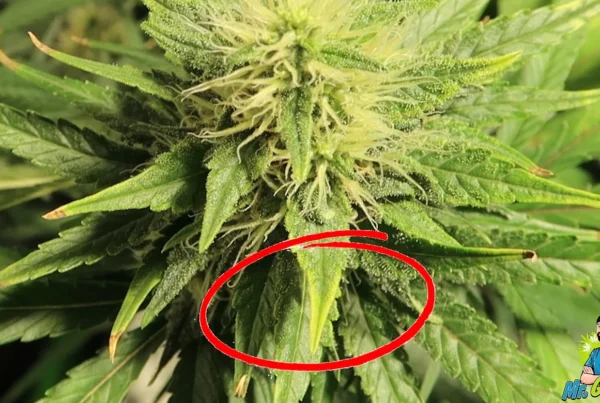On your journey as a cannabis grower, you may run into problems such as nutrient deficiencies in your cannabis plant. One of those deficiencies is magnesium deficiency. If magnesium deficiency is left untreated, it does not only affect the overall health and growth of the plant, but also adversely impacts the harvest. This article will not only help you diagnose magnesium deficiency in cannabis plants but will also present you with easy and quick ways to treat it.
Role of Magnesium in Cannabis Plants
Before you start looking for signs of magnesium deficiency in the cannabis plant, it is important that you know the role this nutrient plays in plant growth. Magnesium is required for photosynthesis which means that a lack of magnesium will deprive the plant of the energy that it needs to function. Magnesium is a secondary nutrient and it is the main constituent of chlorophyll, a substance that gives plants their green color and helps in photosynthesis. Magnesium also plays a key role in the activation of enzymes that help in respiration and other crucial plant functions. Magnesium is also required for the breakdown of carbohydrates and the formation of protein. Moreover, without magnesium, it becomes difficult for the plant to absorb phosphorus – which is a primary nutrient for plants. Magnesium deficiency can lead to the plant not being able to perform basic functions. As a result, it makes the plant weak and stunts its growth.
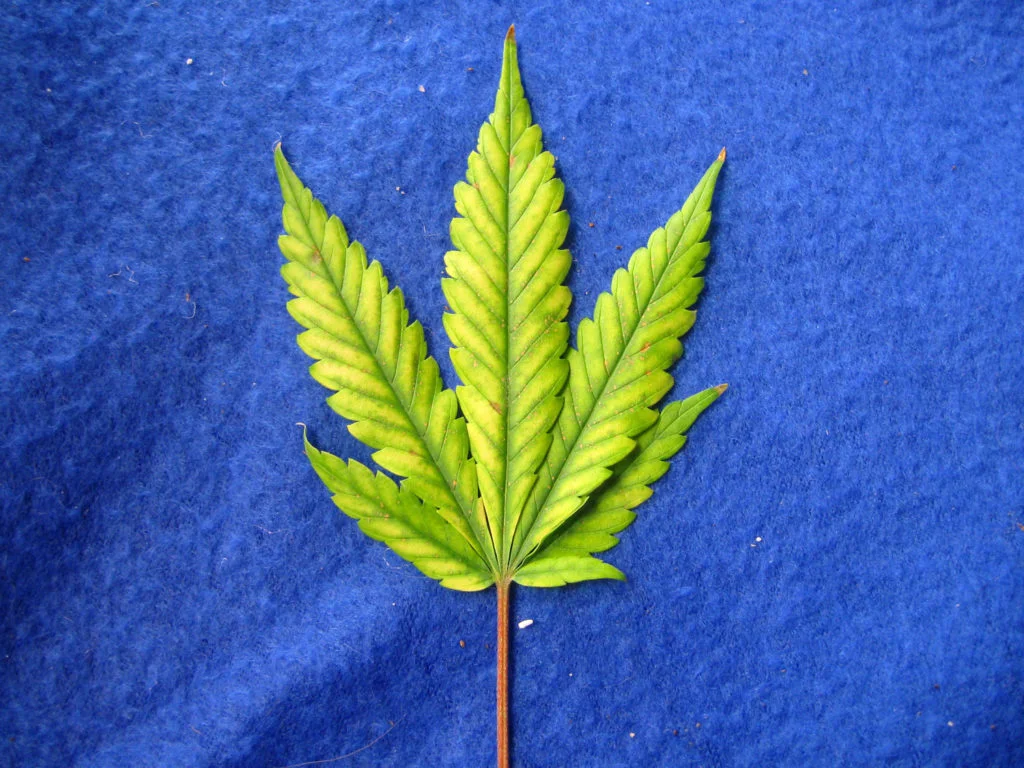
Symptoms of Magnesium Deficiency in Cannabis Plants
Magnesium is a mobile nutrient, which means, as magnesium is depleted, the older leaves are impacted first as the plant transports magnesium to new leaves. But the symptoms can spread to new growth if left untreated. Without treatment, the older leaves die and new leaves start turning yellow. The main symptom of magnesium deficiency is interveinal chlorosis which means that the parts between the veins of the leaves start turning yellow. This happens because magnesium is required for the production of chlorophyll. The leaves also have brittle and dry edges. As the deficiency gets worse, you may notice necrotic brown spots on the margin or the edges of the leaves. You should also check for any red stems as it is said to be another tell-tale sign of magnesium deficiency. In short, you should look for the following signs:
- Interveinal chlorosis or yellowing of leaves between the veins
- Crispy and brittle edges
- Brown spots along the edges
- Red Stems
- Older leaves being affected first
- Deficiency moving upwards to new growth
If you see symptoms and tick most of the checkboxes in the list above, then it is crucial to start the treatment to set your plant on the path to recovery and to help limit the negative impact to yield.
Causes of Magnesium Deficiency in Cannabis Plants
Magnesium deficiency can be the result of overwatering, incorrect pH, and improper nutrient supplementation. In soil, overwatering can lead to soggy roots or even root rot which prevents the cannabis plant from absorbing adequate nutrients from the soil. This can result in the plant not uptaking magnesium as needed.
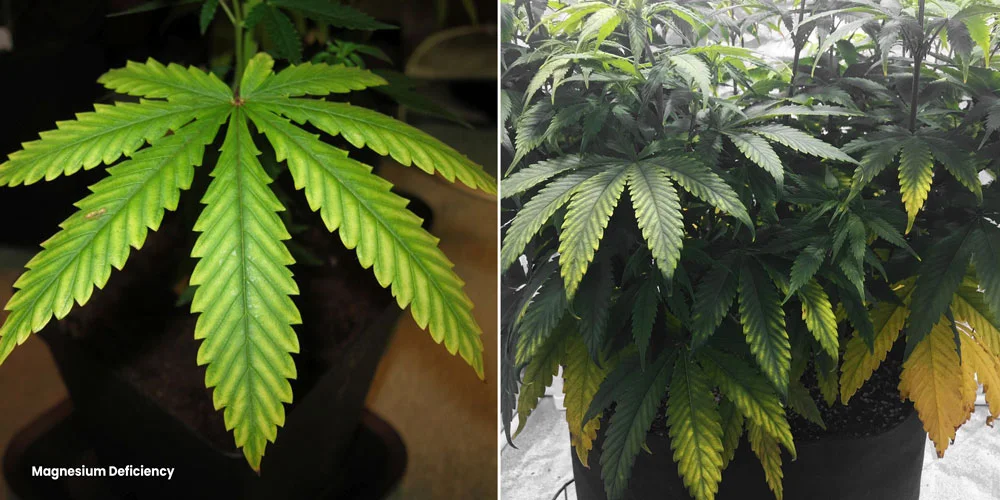
Another reason for the deficiency is the incorrect pH in the growing medium. An optimal pH level is required for the proper absorption of magnesium. Adding more nutrients to a medium that does not have the correct pH could lead to a nutrient lockout and worsen the problem. Not using the proper ratio of nutrients can also cause magnesium deficiency. For example, using egg-shells that just provide calcium will leave plants deprived of magnesium. For growers growing in coco coir and using reverse osmosis water, using a Cal-Mag supplement is very important. Coco coir retains cations which can help act as buffer but can also have adverse effects if not enough nutrients are added to the medium. With the right watering practices, regular pH monitoring, and proper nutrient supplementation, magnesium deficiency can be prevented.
Magnesium Deficiency Treatment for Cannabis Plants
If you have diagnosed that your plant is deficient in magnesium, it is suggested that you act quickly and start the treatment. Here are a few treatments that you can use to recover from magnesium deficiency in cannabis plants:
- Correct pH levels: If the pH of the medium is not correct, the plant will be unable to uptake magnesium – even if it is present.
- The optimal pH level for magnesium absorption in soil is between 6.0 and 7.0 pH
- In hydro, a pH level between 6.0 and 6.5 pH is recommended for adequate absorption of magnesium
- To restore the pH to correct level, flush your medium or hydroponic system with pH-balanced water containing a cannabis-friendly balance of nutrients. Flushing will also eradicate any unwanted salts from the medium or system.
- Supplements: Adding a Cal-Mag supplement after restoring the pH level will help the plant get the magnesium that it needs. Cal-Mag supplements are great for use in soil, soilless, and hydroponic systems too. They are commonly available in local hydroponic stores as well as online shops. Another source of magnesium is Dolomite lime which is often used by organic gardeners. You can find Dolomite lime at your local gardening store and using finer grade is recommended. Dolomite lime has a neutral pH, so it may drift your medium’s pH up towards neutral over time. You can use Dolomite lime by adding around 7 teaspoons of it to one gallon of dry soil. Once the dolomite lime is mixed in the soil, water the soil with pH-balanced water and let it sit for two days. After that, you can check the pH of the soil and add in your plants.
- Epsom Salt: Some growers use Epsom salt to fix magnesium deficiency. You can add one teaspoon of Epsom salt to a gallon of water. Since Epsom salt is magnesium sulfate, it can help fix magnesium deficiency. Although, often times magnesium deficiency appears along with calcium deficiency and iron deficiency. Therefore, it is better to use a good Cal-Mag supplement instead of just Epsom salt.
- Some other options that you can use to fix magnesium deficiency are garden lime and worm castings.
After using these treatments, you should stop seeing any further chlorosis. The affected growth may not recover entirely but new growth will not show signs of magnesium deficiency. To prevent this problem from occurring in the future, monitor the growing medium’s pH regularly, and supplement the plant with proper nutrients.
Sources:
- https://www.ilovegrowingmarijuana.com/nutrient-deficiencies-in-marijuana-plants
- https://www.growweedeasy.com/cannabis-plant-problems/magnesium-deficiency
- https://sensiseeds.com/en/blog/magnesium-deficiency-cannabis-plants-spot/
- https://dutch-passion.com/en/blog/a-visual-guide-to-cannabis-deficiencies-n987#magnesium
![]()

